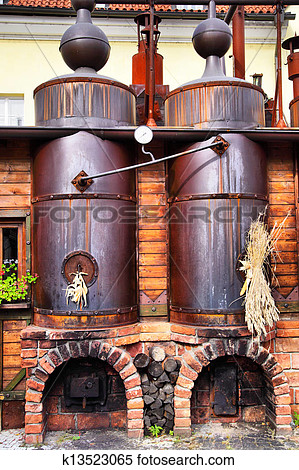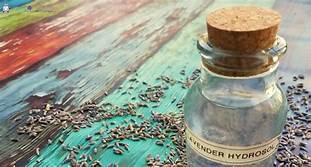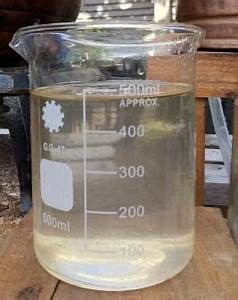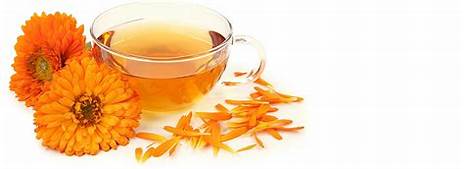Hydrosols and Herbs










Hydrosols and Herbs
With this in mind, the tinctures that my colleagues and I have prepared in the last three seasons were made using 95 percent ethyl alcohol diluted to 60 percent with hydrosol of the tinctured herb. This was then poured over the herb and left to macerate for about two weeks.
The tincture was then strained and filtered through fine cheese cloth and diluted down to the appropriate level of alcohol by volume with more hydrosol. I call these products Aromatic Tinctures, a trademarked name. They smell and taste quite remarkable-unlike traditional tinctures, which smell only of alcohol.
They also contain both the alcohol-soluble (complex sugars, alkaloids) and water-soluble (acids, aromatic and carbon molecules) components of the plants. I have now made Aromatic Tinctures of melissa, Ledum, Echinacea, Saint John's wort, German chamomile, and yarrow. Some of the tinctures were succussed after the hydrosol was added, some were not; personally I find the succussing or banging the Aromatic Tincture before every use is the best method. The efficacy of the tinctures seems to be enhanced by the hydrosol , and they certainly smell and taste much better than most tinctures.
It is too early to know exactly how different they are in physical effect, but they "feel" more active and have yielded some exceptional results with adults, children, and pets. I believe the addition of hydrosols will be a recognized way to prepare tinctures in the future. I have replaced all my flower remedies with Aromatic Tinctures.
We are also working with tinctures by adding complementary hydrosols, German chamomile water added to melissa tincture creates a more sedative nerve relaxant. Melissa tincture with neroli hydrosol is for states of high anxiety, panic, and exam jitters; and then there's Saint John's wort tincture with linden hydrosol, which is a real knockout. The possibilities are endless, and in the case of shelf life is not an issue because of the high alcohol component of the tincture.
Reference: Hydrosols- The Next Aromatherapy: Suzanne Catty
Hydrosol Remedies






Hydrosol Remedies
Homeopathic remedies are prepared by repeated dilution and succussion (banging) of standard tinctures in 60 percent alcohol or high-proof vodka. The more diluted and succussed the remedy, the stronger its potency. Alcohol is the chosen medium because it contains water, which can best hold and expand the medicinal vibration of the remedy. The alcohol also acts as a preservative and antibacterial agent.
Hydrosols can be used in the same way as the tinctures in homeopathy. Single drops can be diluted in quantities of distilled water and succussed to ditribute the energy of the hydrosol throughout the water. If we follow Hahnemann precisely, we dilute one drop of hydrosol in ten drops of water, bang (succuss) the bottle on the table one hundred times, and thus have a remedy of 1c.
If we do this six separate times we will have a 6c remedy; if we dilute the 6c twenty four more times, we will have an infinitely stronger 30c remedy, and so on. Laborious and time consuming as this may be, it seems to work just as well with hydrosols as with tinctures. And remember the more you dilute the stronger your remedy.
My experiments in this area stem as much from my homeopathic experiences as from the problem of ingesting Greenland moss (Ledum groenlandicum) hydrosol. It works well; in fact, it works a little too well. Greenland moss is so efficient and a rapid detoxifying substance that some clients just find it too strong at the standard dilution of thirty millilitres in one litre of water. Even when the dose is cut in half (15 millilitres per litre of water) which I now recommend as standard with Greenland Moss, some clients still seem to be "proving" the effects. strongly with the effects that even a whiff of the hydrosol thereafter could make them run for the bathroom.
So I diluted the Ledum until I thought it was imperceptible, that is one drop in 1 litre of water. One client still reacted, however. Now the problem was twofold. This woman had responded so violently to the original dose that even the thought of Ledum now elicited nausea. How could we get over the fear reaction and enable her to use the remedy? At one drop per litre the smell was virtually undetectable - but not, apparently, if you were looking for it.
I continue to make tests on dilution, but it will require much more experimentation, perhaps by qualified homeopaths, to fully determine whether hydrosols offer a viable option to remedy preparation by tincture. What I do know is that hydrosols work, even in extremely low dilutions such as those prepared for homeopathy.
They also work very powerfully when used by the single drop. Probably the biggest drawback to this kind of treatment is the delicate nature of hydrosols. Tinctures will stay viable and free from bacteria for fairly long periods, thanks to their alcohol content. Homeopathic remedies, which are diluted in alcohol , also benefit from this preservative action.
Not so with aromatic waters. Hydrosols ideally contain no preservatives and must be packaged in sterilized containers and stored carefully to avoid degradation. Any aroma-homeopathic remedy made in the manner described will either require the addition of alcohol or have a short life span suitable only for immediate use; these problems can be circumvented somewhat if the clients are willing to prepare dilutions themselves.
Reference: Hydrosols The next Aromatherapy: Suzanne Catty
Homeopathy and Hydrosols








Homeopathy and Hydrosols
Homeopathics are the vibrational, or subtle, edge of the spectrum of holistic healing. Treatment follows many of the concepts of Ayurveda and Traditional Chinese Medicine in that the client is considered a whole and sickness is seen as an imbalance of the terrain as opposed to a disease to be eradicated. So it is that I look at hydrosols as the equivalent of a homeopathic version of essential oils.
Gentle and safe in their pure state, highly effective in extremely low dilutions, and with few contraindications or safety precautions, hydrosols are the subtle, constitutional form of aromatherapy.
Although homeopathy was originally conceived of as a constitutional healing mechanism, it has been some years since the concept was "invented," and there are now as many schools of practice in this modality as in aromatherapy. It is interesting to note that Hahnemann, in " proving" some of his remedies, turned to essential oils.
For him the only viable method of ingesting sufficient quantities of plant material to elicit the symptoms he wished to cure was to ingest oils.
The analogy between hydrosols and homeopathy can be drawn further. Modern homeopathy allows both for the constitutional and the prophylactic or treatment-oriented use of remedies. For example, bronchitis is an imbalance in the system but it is also an infection, and there are many remedies that will "treat" bronchitis as an ailment while simultaneously balancing the constitution.
So it is with hydrosol therapy, for bronchitis, Inula, Eucalyptus globulus or E.polybractea, rosemary CT verbenone, oregano, tea tree, or winter savory hydrolates would all be appropriate. Chosen wisely and considering the nature of the individual, any of these could address the bronchitis while stimulating the body's natural immunity and overall function. In other words, the hydrosols act both constitutionally and specifically on our health.
Reference: Hydrosols The Next Aromatherapy: Suzanne Catty
Phytotherapy - The Holistic Approach




Phytotherapy - The Holistic Approach
The of the "terrain", as the French call it, or constitution," in homeopathic terms, is particularly relevant to hydrosols. It is also a basic tenet of holistic health. All disease is an imbalance, and although in treatment the symptoms are considered, the character of the individual is just as important. The premise is that when you rebalance the terrain, disease will disappear. In France much of the way essential oils are used is as "phytomedicines," in the modern pharmaceutical sense.
The aromatogram is a case in point. Modeled on a scientific test used to determine the efficacy of antibiotics on specific organisms, the aromatogram is exactly the same test but uses tiny discs impregnated with essential oils instead of antibiotics.The aromatograms show the "kill zone" of each substance tested and can be used to design treatments for a huge variety of pathologies, including those that may be antibiotic resistant. However, in vitro is not the same as in vivo. It is not completely uncommon for the oils that work in aromatogram to have less than the expected effect when given to the person in vice versa. Why?
Sometimes essential oils may be too strong for a person. Sometimes they just don't work, for no apparent reason. So the constitution, or terrain, must be addressed. Galen and his formulaic approach is out and Hahnemann comes in. The aromatherapists will then try to rebalance the individual, choosing oils like lavender, rose, sandalwood, and vertiver that address issues of emotional, spiritual, and psychological health.
Sometimes rebalancing the terrain is enough; the immune system kicks in and the pathology will disappear. Sometimes rebalancing the terrain creates an environment of healing , and the individual's body will then allow the oils to do their work. Jus how effective hydrosols must be on this level of healing. Hydrosols really are the next aromatherapy. A constitutional aromatic. Eureka as they say. When I first realized that neroli water would stop caffeine jiggers, a colleague told me my evidence was too anecdotal to be accepted. Why would just a few sips of water with this hydrosol have such an effect? The aroma of the hydrosol alone does not do it, and it is not the rehydrating effects of the water, since just a few sips work.
But I couldn't prove my finding scientifically; I just realized this was a constitutional reaction by the body to the tiny amount of hydrosol in the glass and the copious amounts of expresso in my system. So next time you have too much caffeine or, for that matter, really bad stress, reach for the neroli and see for yourself. Aromatherapy has over four thousand years of anecdotes to fall back on. Does science - or the lack of it - make this history any more or less true? I think not.
Reference: Hydrosols The Next Aromatherapy: Suzanne Catty
Articles - Most Read
- Home
- What are Hydrosols
- What are Hydrosols-2
- The Monographs
- How to Make a Hydrosol
- Table of Common Latin Names and pH Values - F - O
- Distilled or Extracted Specifically For Therapeutic Use - 3
- Kurt Schnaubelt
- What isn't a Hydrosol?
- Table of Common Latin Names and pH Values - P - S
- Wholly Water!
- Blue Babies
- Supply and Demands
- Mature Skin
- Recipes Alpha F
- Hydrosols In The Marketplace
- Chemicals: Friends or Foes?
- Hemorrhoids
- Nelly GrosJean
- Water as Medicine
- The Educated Consumer
- Genitically Modified Plants
- Influences
- Water Quality
Articles-latest
- Daucus carota/Wild Carrot Seed - pH 3.8-4.0
- Cupressus sempervirens/ Cypress-pH3.5-3.7
- Coriandrum sativum/Coriander Herb-and-Seed
- Comptonia peregrinal/Sweet Fern- pH 3.8
- Citrus clementine (fe) Clementine Petitgrain- pH 4.3-4.4
- Citrus aurantium var. amara (flos) /Neroli Orange Blossom-pH3.8-4.5
- Cistus ladaniferus/Rock Rose-pH 2.9-3.1
- Cinnamomum zeylanicum (ec) Cinnamon Bark-pH3.3
- Chamaemelum nobile/Roman Chamomile - pH 3.0-3,3
- Centaurea cyanus/Cornflower/Bachelor's Button-pH 4.7-5.0
- Cedrus atlantical/Cedarwood/Atlas Cedar-pH 4.1- 4.2
- Hydrosols -The PH - Anomalies
- Hydrosols- Establishing Shelf Life and Stability
- Boswellia carterii/FRANKINCENSE
- Asarum canadense/ Wild Ginger/Canadian Ginger
- Artemesia vulgaris / Artemesia
- ARTEMESIA DRACUNCULUS - TARRAGON
- Angelica archangelica / Angelica Root - Hydrosols
- The Key, or More Correctly, the pH - 2 - Hydrosols
- The Key, or More Correctly, the pH-Hydrosols
- The Hard pHacts - Hydrosols
- Calamus Root/Sweet Flag - ACORUS CALAMUS
- Yarrow - Achillea millefolium - Hydrosols
- Balsam Fir - Abies balsamea - Hydrosols

